Introduction
Sugar is a concentrated energy food. However, it is not documented as a vital nutrient for humans. If we never had another teaspoon of dietary sugar in our life, our nutritional health would not be affected in the slightest. So from a health view point sugar is valueless. Sugar is traditionally seen as a danger to blood-glucose levels. The US Dept of Agriculture recommends that sugar makes up no more than about 8 percent of the total calories in the average diet. The feeding of sugar to livestock production is a new concept in feed technology. (See PGK John, 2006)
Global Sugar Production: More than 100 countries produce sugar, 78% of which is made from sugar cane grown primarily in the tropical and sub-tropical zones of the southern hemisphere, and the balance from sugar beet which is grown mainly in the temperate zones of the northern hemisphere. Generally, the costs of producing sugar from sugar cane are lower than those in respect of processing sugar beets. Currently 69% of the world´s sugar is consumed in the country of origin whilst the balance is traded on world markets. The five largest exporters in 2006/07, Brazil, Thailand, Australia, SADC and Guatemala, are expected to supply approximately 80% of all world free market exports.
Table 1 Global sugar Production & consumption.
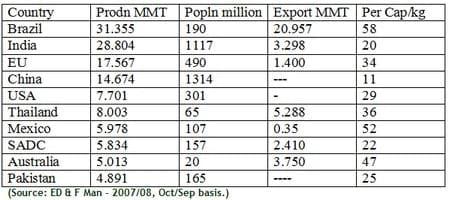
Sugar Effect on Health: Refined sugar is used in most processed foods and is very damaging to human health and compromises the immune system. High sugar intake is also responsible for blood sugar spikes which cause pancreas and adrenal glands to overwork as they are caught up in an unhealthy cycle trying to stabilize blood glucose levels. Eventually, the pancreas and adrenals burn out on a high sugar diet leading to Type 2 diabetes, chronic fatigue, hypoglycemia, and early menopause. The other health dangers like asthma, move mood swings, provoke personality changes, muster mental illness, nourish nervous disorders,
diabetes,
heart disease, grow gallstones, hasten hypertension, and add arthritis. (American Dietetic Association and American Diabetic Association). It is indeed worth pondering the colossal usage of sucrose for human diet even then there are lot allegations on its use in human nutrition. The demand for sugar goes up and the production doubles. Since sugar cane plants are the most efficient solar energy converter sugar could be used to produce animal products also through animal system.
Sugar in Feeds
There has been much interest in feeding sugars to dairy cattle in the last few years (Mary Beth Hall, 2002). Sugars are separated from disaccharides by their solubility in 80% ethanol. They are considered non- neutral detergent fibre carbohydrates (NFC) as well as non- structural cell contents. Mature grains such as corn or oats may contain very little sugar because most have been converted to storage polysaccharides. Sugars ferment very rapidly in the rumen. Studies have reported higher butyrate and slightly slower propionate production for sugar fermentation in rumen (Storbel and Russell, 1986). The dry matter intake has been seen increased with feeding sugars (Broderick et al, 2000) due to improved palatability and increased rates of solid or liquid passage from the rumen. The microbial protein yield in rumen increased with sugar feeding with more rumen degradable protein. (Hall and Weimer, unpublished)
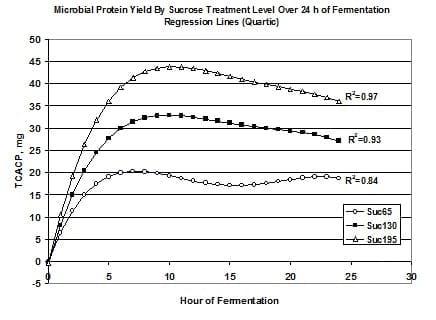
There have been relatively few animal performance studies using purified sugars. Two studies in which sucrose was substituted for starch in lactating dairy cow´s rations suggest that sucrose increases butterfat yield. The effect of feeding sucrose substitution for starch at different levels were shown in Table 2.TT
Table 2. Changes in milk yield and composition with changes in sucrose and starch supplementation. (Broderick et al., 2000). FCM = fat-corrected milk
The above data elucidate the positive effect of feeding sugar along with grain for milk production. The supply of glucose for lactose conversion and as fuel for milk synthesis though sugar feeding is the axiom of the data.
Glucose - the vital nutrient for animal production
It is an unchallenged fact that glucose is the vital nutrient for bio conversion into milk, meat and egg. Often it has been misconceived that energy is the requirement; however glucose could be synthesized in the animal system by gluconeogenesis using amino acids and short chain fatty acids. In no case long chain fatty acids are not used for gluconeogensis. Long chain fatty acids are broken down to acetic acid by releasing large amount of energy which could be utilized for tissue synthesis. Further acetic acid is combined with oxaloacetic acid before it is burned for oxidative energy. The deficiency of oxaloacetic acid which is rather an essential component for the conversion of amino acids to restructure to glucose moiety in liver may delay the acetic acid clearance.
Glucose to lactose: Glucose enters the cell via the basolateral membrane via a specific transport mechanism. Some glucose is converted to galactose. Both glucose and galactose enter the Golgi and enter into a reaction resulting in formation of lactose. The formation of lactose in the Golgi results in drawing water into the cell, into the Golgi, and ultimately becoming part of milk.
Glucose from feeds
The above deliberations indicate the importance of glucose for milk synthesis. Therefore, the availability of glucose from feeds could be examined. The sources of glucose from feeds are starch, sugar, amino acids and glycerol. The cereal grains which constitute a large percentage in animal feeds provide starch. Starch is fermented in rumen yielding propionic acid which is elongated to glucose by way of gluconeaogenesis.
Table 3. Metabolisibility of Sugar & feeds and glucose availability
There fore, it is evident that sugar could be well utilized for animal feeding and for human consumption indirectly as it is done for grains. The sugar which would be converted into glucose in animal system would no longer be hazardous as it is noticed in humans. It is however; noticed that sugar could not be fed alone as it may cause deprived appetite and acidity in animals. It should be mixed with different feed ingredients. The most economical sugar feed is sugar syrup.
Sugar Syrup feed
A recent advance in feed technology and animal nutrition is the development of sugar syrup, an intermediary product of sugar refining as energy feed for livestock (PGK John, 2006). In the Middle East where the cost of grains is increasing exponentially, the ready availability of sugar syrup has been considered a recourse to livestock feed. Molasses is the last residual product that comes out from sugar mills. It is a highly viscous (<100,000 cP at 25 Deg C) liquid with 48% sugar and more than 20% ash. Because of the repeated boiling (about 13 times) the sugar is caramelized, and gets bound to organic substances like glue and polysaccharides which depresses the digestibility of dry matter. As a matter of fact, the sugar companies have not been interested in keeping up the quality of molasses since its main use was for alcohol production. The use of molasses as an energy source was not measured in animal feeds. Often it is used as a binder, dust reducer and sweetener with a low inclusion rate. In that matter, the demand for molasses was low in the animal ration. The Product Development team at Al Khaleej Sugar Co. examined the possibilities of improving the quality of molasses to make it a suitable feed ingredient. The final decision was taken by the Chairman Mr. Jamal Al Ghurair, and the process parameters were defined. This resulted in the production of high quality molasses with 75% sugar, and was termed "Sugar Syrup". The main attributes of the above product were that it is an instant energy feed and a better substitute for starch/grains and vegetable oil. Sugar Syrup has no physical limitations on incorporation in ration and maintains the binding effect while being more aromatic and palatable. It is also incorporated a lot in mash feeds and contains no aflatoxin. The research in animal nutrition has exhibited the advantage of feeding sugar better than starch as the sugar is directly converted into glucose with out much nutrient loss (Chamberlain et al.,1993; Mahagna and Nir (1996 ). The concept of feeding sugar by products was developed on this physiological principle.
Sugar syrup has been used in animal ration for the following reasons:
- Increases the palatability of the feed.
- Improves the dry matter digestibility
- Reduces the dustiness of the feed
- Inhibits the mould formation on the feed
- Stops insect infestation on storage
- Use as a binder for feed pelletization
- Increases energy density of the ration
- Masks the less palatable ingredients.
- Substitutes the grain in feed formula
- Improves the fibre utilization my ruminant animals
- Sugar syrup is free of aflatoxin
Table 4. A typical analysis of Sugar syrup
(PGK John, 2006)
Sugar syrup is the first liquid separation from sugar crystallization. This could be called ´High Test Molasses´ or ´A Molasses´.
Table 5. Comparative nutritional composition on ´as such basis´
Sugar syrup utilization
Sugar syrup a high energy feed could be used in different proportions in feeds as per the nutritional requirement of the animals. The high energy feed that is used to day mostly grains particularly Corn, barley, wheat and sorghum. The presence of fibre in grains reduces its digestibility compared to sugar. Further more starch in grains is found to be 80% metabolisable. In view of the above sugar syrup could be utilized in different ways as shown below:
1. Sugar syrup in TMR.
Total Mixed Ration is the total feed fed to dairy cows. Grains, protein meals, oil seeds, fodder minerals and vitamins are mixed in right proportion to meet the nutritional requirement for milk production. A typical formula using sugar syrup is shown below:
Table 6. A typical TMR used in a dairy farm is given below for discussion.
2. Sugar syrup in Poultry feed.
Sugar syrup is used in poultry feeds to substitute grains. As per NRC 1994 sugar is recommended to be fed to 15% in the feeds.
Feeding Trials on Broiler and layer birds with graded level of Sugar syrup
(See Ahmed S. Hussein, Jamal Al Ghurair and P. George Kunju John 2009)
One day old Hubbard commercial broiler chicks of 100 per pen with 3 replicas for one control and three treatments were used. The normal broiler feeds incorporate Corn and vegetable oil to meet the dietary energy requirement.
Sucrose is hydrolyzed by sucrose into glucose and fructose; while lactase converts any lactose into glucose and galactose (Mahagana & Nir, 1996). Sugars have been accepted as a better energy donor than starch in the animal system. Chamberlain et al. (1993) concluded that sugars, particularly sucrose, are certainly superior to starch. Mahagna and Nir (1996) indicate greatest maltase activity in the jejunum, followed by the ileum; while the lowest value was seen in the duodenum. It is therefore, seen that the metabolizability of sucrose is significantly higher than starch. In order to test the suitability of sugar in poultry ration sugar syrup was incorporated in graded levels in broiler starter and finisher.
Table 7. Composition of experimental starter diets for broiler chicks
aCalculated nutrient composition is: protein, 22.00%; ME, 3.00 MCal/kg;
Met, 0.54%; met+cys, 0.91%; lys, 1.22%; calcium, 1.0% and available phosphorus, 0.46%.
bCalculated nutrient composition is: protein, 21.92%; ME, 2.95 MCal/kg; Met, 0.59%; met+cys, 0.96%; lys, 1.22%; calcium, 1.0% and available phosphorus, 0.46%.
cCalculated nutrient composition is: protein, 21.62%; ME, 2.95 MCal/kg; Met, 0.59%; met+cys, 0.94%; lys, 1.22%; calcium, 1.0% and available phosphorus, 0.45%.
dCalculated nutrient composition is: protein, 21.61%; ME, 2.95 MCal/kg; Met, 0.59%; met+cys, 0.94%; lys, 1.24%; calcium, 1.0% and available phosphorus, 0.45%.
eProvided the following per kilogram of diet: vitamin A 8,820 IU; vitamin D3, 2,822 ICU; vitamin E, 26 IU, menadione dimethylpyrimidinol bisulfite, 2.0 mg; thiamin, 5.94 mg; riboflavin, 6.2 mg; pantothenic acid, 15 mg; niacin, 44 mg; pyridoxine, 4.5 mg; biotin, 0.23 mg; choline, 1,450 mg; folacin, 0.88 mg; vitamin B12, 0.14 mg; ethoxyquin, 125 mg; Se, 0.24 mg; Cu, 8 mg; I, 1.5 mg; Fe, 120 mg; Mn, 83 mg; Zn, 60 mg; and Co, 5 mg.
Table 8. Composition of experimental finisher diets for broiler chicks
aCalculated nutrient composition is: protein, 20.00%; ME, 3.19 MCal/kg; Met, 0.51%; met+cys, 0.85%; lys, 1.07%; calcium, 0.9% and available phosphorus, 0.36%.
bCalculated nutrient composition is: protein, 20.00%; ME, 3.12 MCal/kg; Met, 0.56%; met+cys, 0.90%; lys, 1.09%; calcium, 0.9% and available phosphorus, 0.36%.
cCalculated nutrient composition is: protein, 19.95%; ME, 3.07 MCal/kg; Met, 0.56%; met+cys, 0.90%; lys, 1.10%; calcium, 0.9% and available phosphorus, 0.36%.
dCalculated nutrient composition is: protein, 19.97%; ME, 3.01 MCal/kg; Met, 0.56%; met+cys, 0.89%; lys, 1.12%; calcium, 0.9% and available phosphorus, 0.36%.
eProvided the following per kilogram of diet: vitamin A 8,820 IU; vitamin D3, 2,822 ICU; vitamin E, 26 IU, menadione dimethylpyrimidinol bisulfite, 2.0 mg; thiamin, 5.94 mg; riboflavin, 6.2 mg; pantothenic acid, 15 mg; niacin, 44 mg; pyridoxine, 4.5 mg; biotin, 0.23 mg; choline, 1,450 mg; folacin, 0.88 mg; vitamin B12, 0.14 mg; ethoxyquin, 125 mg; Se, 0.24 mg; Cu, 8 mg; I, 1.5 mg; Fe, 120 mg; Mn, 83 mg; Zn, 60 mg; and Co, 5 mg.
The growth performance was measured at 0, 14, 28 and 35 days and the results are given in table 9.
Table No 9. Growth performance of broiler chicks
a-e Means within a column with no common superscript differ significantly (P<0.05).
The group with 5% sugar syrup showed better growth than the control group. However; the 10% group showed the least growth rate. The 15% group showed insignificant growth rate to the control group. Therefore, the concept of high dietary energy concentration in sugar syrup and its high ME value is getting acceptable with the trial data. If the ME value that was calculated for the formulations were incorrect the higher inclusion rates of syrup would have depressed growth for want of dietary energy. The blood parameters were also showed the efficacy of sugar syrup with out any deleterious effect on health of birds. The blood parameters are shown as table 10.
Table 10. Blood parameters for broiler chicks fed with Sugar syrup
The slight elevation of blood glucose is the indication of high glucose supply through sugar syrup feeding. All other parameters are with in normal range.
While examining the feed intake there is no significant difference with in groups. The most important benefit of sugar syrup feeding was the economical advantage. The formula costs could be reduced significantly while sugar syrup inclusion. The graphs prepared show the face very clearly.
A significant observation noticed is the reduction in cholesterol level in blood. The data is given as table 11.
Table 11. Cholesterol & Triglycerides level in blood
The poultry nutritionists were striving to reduce the cholesterol level in chicken meat and egg. The methods that are practiced were intricate and expensive. More over the addition of vegetable oil to enhance the ME value in feed elevated the cholesterol level. The future research into the incorporation of sugar syrup would go a long way in ameliorating the cholesterol problem to a certain extend. The present studies indeed opened the gate way for it.
Fig 1. The formula cost for Broiler Starter feed with different levels of Sugar syrup inclusion.
Fig 2. Broiler Finisher feed with different levels of sugar syrup inclusion.
The economic benefit was due to the substitution of Corn and vegetable fat. The energy value, its unit cost for those feeds are shown below:
Table 12 Cost: Nutrient comparison with energy feeds
Effect of dietary treatments on laying hen performance during Weeks 31 through 50
a-bMeans within a row with no common superscript differ significantly (P<0.05).
Feed Technological Application.
Sugar syrup being in liquid form its incorporation in dry feeds has some limitations. The normal molasses blender used in feed mills is inefficient to use higher levels of sugar syrup in feeds. The mixing of molasses over 10% causes balling of molasses in between the particles and causes deposition of feeds with molasses over the feed conveyors. The more balling of molasses harder will be pelletization by increasing the electric load.
MIXER AND PROBLEMS
Fig. 3 Molasses mixer Cleaning
SUGAR SYRUP COATER
The function of coating technique is essential for Sugar syrup inclusion for continuous process stability, security, feed conversion and economical use. Hence, dysfunction and interruption can cause great trouble and loss of production. Therefore, it is necessary to appreciate the great significance of COATING and to optimize the mixing technique via intensive R&D activities. (Mehool Dave, 2007)
It has been great concern of AKS to develop customized coating solution and to meet newly developed feed formula for feed mill to obtain the best value for production and easy adoption of the stable equipment on existing feed line.
The available feed mills equipment is designed and installed to handle molasses (Molasses mixer) only and not sugar syrup as coating with higher percentage .A new invention of SUGAR SYRUP COATER has its inbuilt robust design of a long and low height chamber with twin shaft paddle rotating in opposite direction at predetermine speed. Twin shaft with tulip shaped paddles at different angles to create a fluidized zone on top and very fine sprayers were kept on at angle to cover the area of fluidizes zone. The alternate different design of paddle will achieve simultaneously the homogeneous mixing and coating to take place. Heated sugar syrup is pumped through the fine spray to achieve coating.
Fig. 4 Sugar syrup Coater. (Al Khaleej Sugar Co LLC, 2006)
A trial unit installation and run result has proved the stability of process parameters with many advantages over an available traditional market mixture.
- Compact design allows the easy adoption in existing feed production line.
- Continuous mixing and not batch mixing .This will provide constant feeding next process step and maintain product consistency.
- Low power consumption
- Due to continuous process less manpower requirement.
- Negligible maintenance cost other then preventive maintenance.
- No product contamination and faster cleaning due to low bed design.
All of the above advantages AKS invention achieved goal in terms of short times process, high productivity, and great degree of coating quality, flexible to control feed rate as well as sugar syrup percentage, easy adoption, and economical outstanding coating quality for the new feed.
There are several other applications with sugar syrup to utilize it better in animal feeds. Some of then are given below:
1. Sugar syrup treated fibre
2. Sugar syrup coated brans
3. Sugar syrup coated protein meals
4. Sugar syrup coated grains.
5. Sugar syrup multinutrient block
Conclusion
The sugar, a high energy material could be used in human diet with precaution to avoid health problems; however converting sugar through animal system into good quality meat, egg and milk would go a long way in ameliorating the animal production.
References
AOAC, 1984. Official Methods for Analysis of the Association of Official Analytical Chemist, 14th ed. AOAC, Arlington, VA.
Ketels, E., and G. DeGroote. 1987. Effect of fat source and level of fat inclusion on the utilization of fatty acids in broiler diets. Arch. Gefluegelkd. 51:127.
Ketels, E., and G. DeGroote. 1988. The nutritional value for broilers of fats characterized by short-chain fatty acids as affected by level of inclusion and age. Anim. Feed Sci. Technol. 22:105.
Lewis, D., and C. G. Payne. 1966. Fats and amino acids in broiler rations. 6. Synergistic relationships in fatty acid utilisation. Br. Poult. Sci. 7:209.
Leeson, S., and J. D. Summers. 1976a. Fat ME-values: The effect of fatty acid saturation. Feedstuffs 48(46):26
Leeson, S., and J. D. Summers. 1976a. Fat ME-values: The effect of fatty acid saturation. Feedstuffs 48(46):26
Mary Beth Hall 2002 "What We Do and Don´t Know About Forage and Carbohydrate Digestion in the Dairy Cow (and some more food for thought)"USDA-ARS U.S. Dairy Forage Research Center, Madison, WI
Mahagna, M., and I. Nir, 1996. Comparative development of digestive organs, intestinal disaccharidases and some blood´ metabolites in broiler and layer-type chicks after hatching. Br. Poultry Sci. 37:359-37 1.
Moran, 1985a Nutrient Requirements of Poultry. 9th Revised Edition. National Academy Press. Washington, DC
National Research Council, 1987. Nutrient Requirements of Poultry. 9th Revised Edition. National Academy Press. Washington, DC.
National Research Council, 1994. Nutrient Requirements of Poultry. 9th Revised Edition. National Academy Press. Washington, DC.
PGK John, 2006. " Sugar Syrup a High energy Feed for Cows" Feed Mix Vol 14 No 2, 2006.PGK John, 2007 " Sugar Syrup a Glucogenic Feed vis a vis Animal Production" Paper presented in " Sugar Syrup a Glucogenic Feed" seminar organized by Al Khaleej Sugar Co, Dubai on 28th October, 2007.
PGK John, 2008. " Sugar Syrup a New energy feed for Poultry" World Poultry Vol 24 No 2, 2008.
PGK John 2008 " Sugar Syrup - an Energy Feed for Poultry Industry" Paper presented in the poultry conference "Challenges for Poultry in Arab World" on 25th March at UAE University Al Ain, UAE)
SAS. SAS User´s Guide: 1982. Statistics. SAS Inst. Inc. Gary, NC.
Scott, M.L., Neshiem, M.C., Young, R.J., 1982. Nutrition of the Chicken, 3rd Edition. M.L. Scott and Associates, Ithaca, NY.
Snedecore, GW and Cochran, WG, 1980. Statistical Methods for Inductively Coupled Plasma Atomic Emission Spectrometry. Varian. Harbor City, CA.
S Leeson and AK Zubair, 1994, Digestion in Poultry II: Carbohydrates, Vitamins and Minerals; Department of Animal and Poultry Science, University of Guelph Guelph, Ontario, Canada NIG 2Wl
S Leeson and AK Zubair, 1997, Nutrition of the broiler chicken around the period of compensatory growth; Poultry Science, Vol 76, Issue 7, 992-999
Sugar Statistics, World of Sugar Illovo Sugar ,2008




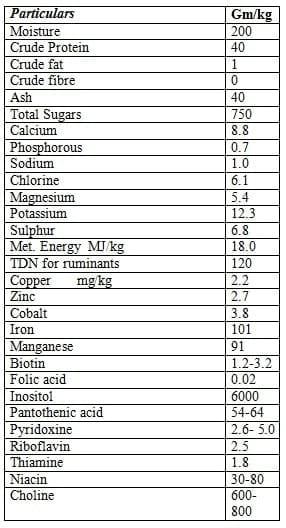
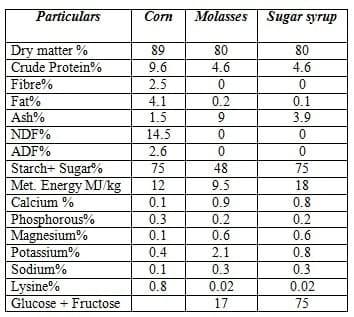
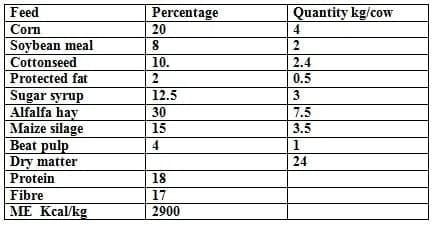
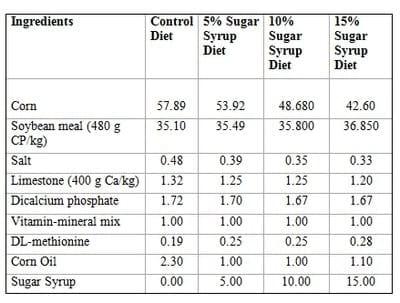
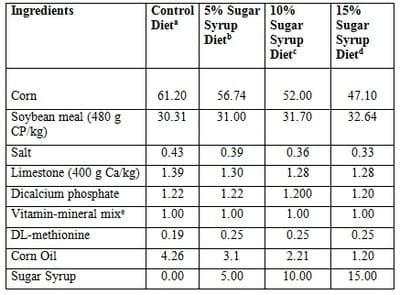

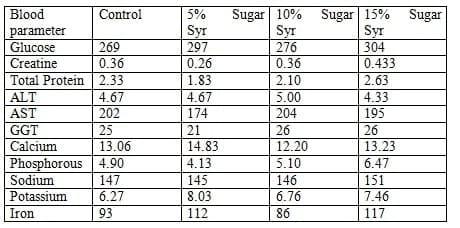
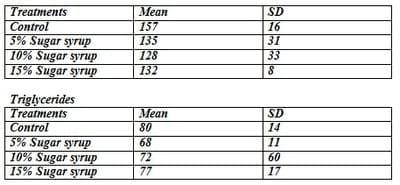

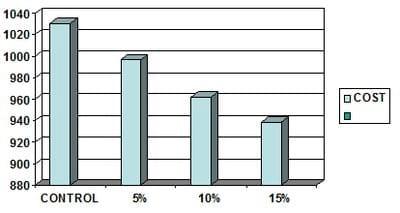


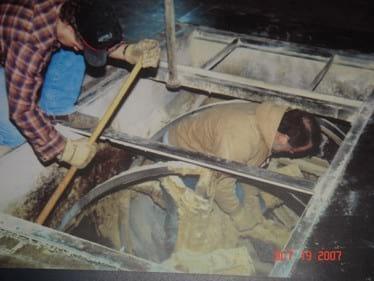
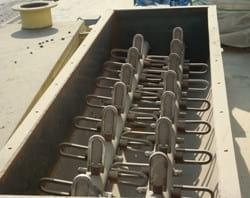
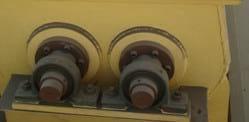
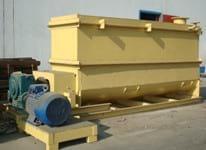







.jpg&w=3840&q=75)